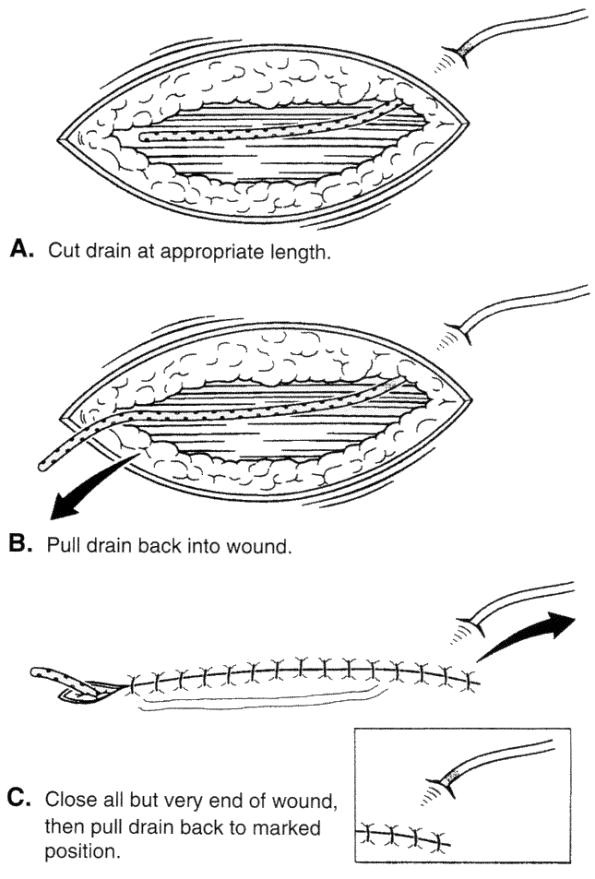Placement of Closed Suction Drains
exp date isn't null, but text field is
Summary:
During closure of orthopaedic surgical wounds in which a closed suction drain is placed, the suture needle can pierce the drain and incorporate the drain into the closure. Upon removal, the sutured drain can break and a fragment of drain may be retained within the wound. Standardizing practices of drain placement may prevent this potentially avoidable intra-operative complication.
Proposal:
This technique was described by Hak DJ, Journal of Orthopaedic Trauma, 2000. The descriptive figure is included.
Following pull-back of the drain under the fascia (which indicates that the drain is not trapped by a suture), no further stitches should be placed into the fascia. If more stitches are needed in the fascial layer, the drain end must be again pulled into the wound, stitches placed, and the drain pulled-back once again to ensure that the drain is not stitched in.
This technique should be employed whenever possible and safe for wound closure. It may not be feasible in cases of large dead spaces in which the exact placement of the drain is critical and must be performed under direct visualization. In such cases, extreme care with closure remains important.
FIG. 1 . A: The drain is cut to the desired length: slightly shorter than the length of the wound. B: The drain is pulled back into the wound, and the skin or fascial layer is closed. Note that the drain position marker is visible deep in the wound. C: All but the far end of the skin or fascial layer is closed, leaving the cut end of the drain protruding from the far end of the wound. The drain is then advanced to the predetermined position, and the far end of the wound is closed.



